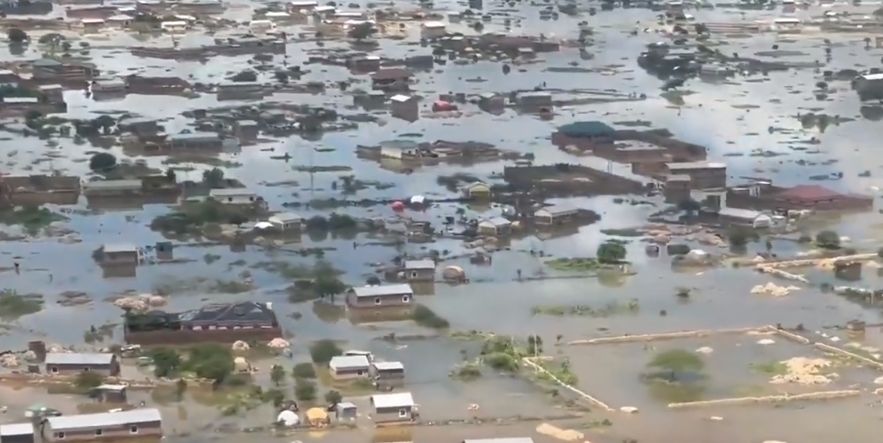Severe floods in Somalia affect 2 million, displace 746 000 and destroy 4 700 houses

The ongoing Deyr rainy season continues to unleash devastating floods across Somalia and the wider Horn of Africa, wreaking havoc on an unprecedented scale. The United Nations Office for the Coordination of Humanitarian Affairs (UN OCHA) confirms that as of November 29, the crisis has affected 2 million people, displaced 746 000, and caused 96 deaths. The most severely impacted areas are in Somalia’s southwest, especially the Bay, Gedo, and Middle Juba regions.
Since early October, Somalia has been facing relentless rainfall associated with the Deyr season, leading to significant flooding in many parts of the country. Rivers have overflowed their banks, resulting in widespread damage and increased casualties.
The floods have had a significant impact on both the population and infrastructure. An estimated 2 million people have been affected by the ongoing crisis, leading to the displacement of approximately 746 000 individuals. The situation is further compounded by the tragic loss of 96 lives due to the flooding.
In terms of infrastructure, the damage is extensive, with at least 4 700 houses destroyed across 34 districts. This destruction has left many communities in dire need of basic amenities and shelter. The southwestern parts of the country, including the Bay, Gedo, Middle Juba, Hiraan, Mudug, Lower Juba, and Middle Shabelle regions, are among the worst affected. These areas have experienced the most significant impact, highlighting the urgent need for assistance and support.
In response to this humanitarian crisis, approximately 145 organizations, predominantly non-governmental, have mobilized to provide aid and relief to those affected. Their efforts encompass a wide range of services essential for survival and recovery in such conditions. These services include water, sanitation, and hygiene (WASH), the provision of shelter and non-food items (NFIs), cash assistance, food supply, protection, nutrition support, camp coordination and management (CCCM), as well as healthcare and education services. This comprehensive response is critical in addressing the immediate needs of the flood-affected population and supporting their path to recovery.
The forecast for the next 48 hours predicts more heavy rainfall over the southwestern regions of Somalia, potentially exacerbating the already critical situation.
This ongoing crisis in Somalia marks a drastic shift from earlier drought conditions to severe flooding, with the country now facing one of the worst flooding events in its history. As reported on November 15, the country was already reeling under the impact of what the UN described as a ‘once-in-a-century’ flood disaster. Over 1.24 million people were affected, and 456 800 were displaced, with 32 fatalities as of mid-November. These extreme weather conditions, influenced by climate phenomena such as El Niño and the Indian Ocean Dipole, have put nearly 1.6 million people at risk.
Additionally, about 1.5 million ha (3.7 million acres) of farmland are under threat.
Update
December 5
The death toll has risen to 110. More than one million people have been displaced and 2.4 million people impacted across 36 districts, UN OCHA said.
Only 30% of those impacted have received help.
References:
1 Somalia – Floods, update – DG ECHO – November 29, 2023
2 ‘Once-in-a-century’ flood disaster strikes Somalia: Over 450 000 displaced, 1.2 million affected and 32 fatalities reported – The Watchers – November 15, 2023
Featured image credit: Earth42morrow (stillshot)

Commenting rules and guidelines
We value the thoughts and opinions of our readers and welcome healthy discussions on our website. In order to maintain a respectful and positive community, we ask that all commenters follow these rules.